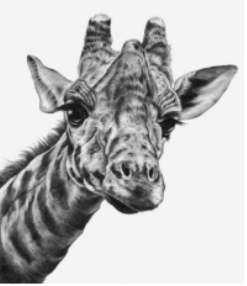
According to Marxist–Leninist political theories of the early 20th century, the kulaks were considered class enemies of the poorer peasants. Vladimir Lenin described them as “bloodsuckers, vampires, plunderers of the people and profiteers, who fatten themselves during famines“, declaring revolution against them to liberate poor peasants, farm laborers, and proletariat (the much smaller class of urban and industrial workers).
Result:
Deporation of more than 15 million farmers.
See the table below for population transfer in the Soviet Union.
Such are the tragic results of false perceptions.
Enemy images as expression of one’s own sense of powerlessness and unfulfilled needs.

Have you lost all trust, that these kulaks will ever want to be helpful to others?
Perceptions that an enemy wants to kill you or many people, such as Lenin’s enemy image of the kulaks above, at the root may constitute a request for support and care.
Yet the person is unable to experience their needs as a request, given the context of fear of death, and also the person can only communicate in jackal in this situation.
They are not open to a No.
At the same time the person is incapable to see needs of the other side. In the complete alienation of one’s own need, the other is reduced to be the alienated image of one’s own powerlessness and needs.
Using unilateral force can become very attractive in such a dire situation of big need.
The path to deescalation includes an inportant step that heals trust to get people to start communicating again. The relation is so full of distrust that mediation cannot even start:
What should happen, so that you are willing to trust even a little bit?
Maybe an acknowledgement of the harmful consequences of a prior action can create a shift. But the more painful the action was for the affected party, the harder it will be to take responsibility for it.
Imagine: a president of kulak community would be able to say to Lenin: “I do not have words for an excuse that might be appropriate for the suffering my kulak community has brought to so many. So please take my life, as a token for the truthfulness that we kulaks mean it, when we say: ‘We are sorry for the suffering we have created in the last famine.’
Population Transfers in Soviet Union
| Date of transfer | Targeted group | Approximate numbers | Place of initial residence | Transfer destination | Stated reasons for transfer |
|---|---|---|---|---|---|
| April 1920 | Cossacks, Terek Cossacks | 45,000[139] | North Caucasus | Ukraine, northern Russian SFSR | “Decossackization“, stopping Russian colonisation of North Caucasus |
| 1930–1931 | Kulaks | 1,679,528- 1,803,392[19] | “Regions of total collectivization”, most of Russian SFSR, Ukraine, other regions | Northern Russian SFSR, Ural, Siberia, North Caucasus, Kazakh ASSR, Kirghiz ASSR | Collectivization |
| 1930–1937 | Kulaks | 15,000,000[20] | “Regions of total collectivization”, most of Russian SFSR, Ukraine, other regions | Northern Russian SFSR, Ural, Siberia, North Caucasus, Kazakh ASSR, Kirghiz ASSR | Collectivization |
| November–December 1932 | Peasants | 45,000[140] | Krasnodar Krai (Russian SFSR) | Northern Russia | Sabotage |
| May 1933 | People from Moscow and Leningrad who had been unable to obtain an internal passport | 6,000 | Moscow and Leningrad | Nazino Island | “cleanse Moscow, Leningrad and the other great urban centers of the USSR of superfluous elements not connected with production or administrative work, as well as kulaks, criminals, and other antisocial and socially dangerous elements.”[141] |
| February–May 1935; September 1941; 1942 | Ingrian Finns | 420,000[142] | Leningrad Oblast, Karelia (Russian SFSR) | Astrakhan Oblast, Vologda Oblast, Western Siberia, Kazakhstan, Tajikistan, Finland | |
| February–March 1935 | Germans, Poles | 412,000[140] | Central and western Ukraine | Eastern Ukraine | |
| May 1936 | Germans, Poles | 45,000[140] | Border regions of Ukraine | Ukraine | |
| July 1937 | Kurds | 1,325[143] | Border regions of Georgia, Azerbaijan, Armenia, Turkmenistan, Uzbekistan, and Tajikistan | Kazakhstan, Kirghizia | |
| September–October 1937 | Koreans | 172,000[144] | Far East | Northern Kazakhstan, Uzbekistan | |
| September–October 1937 | Chinese, Harbin Russians | At least 17,500[145] | Southern Far East[140] | Xinjiang,[145]Kazakhstan, Uzbekistan[140] | At least 12,000 Chinese citizens were deported to Xinjiang, while 5,500 Chinese Soviet citizens were deported to Central Asia.[145] |
| 1938 | Persian Jews | 6,000[146] | Mary Province (Turkmenistan) | Deserted areas of northern Turkmenistan | |
| January 1938 | Azeris, Persians, Kurds, Assyrians | 6,000[147] | Azerbaijan | Kazakhstan | Iranian citizenship |
| January 1940 – 1941 | Poles, Jews, Ukrainians (including refugees from Poland) | 320,000[148] | Western Ukraine, western Byelorussia | Northern Russian SFSR, Ural, Siberia, Kazakhstan, Uzbekistan | |
| July 1940 to 1953 | Estonians, Latvians & Lithuanians | 203,590[149] | Baltic states | Siberia and Northern Russian SFSR | |
| September 1941 – March 1942 | Germans | 855,674[150] | Povolzhye, the Caucasus, Crimea, Ukraine, Moscow, central Russian SFSR | Kazakhstan, Siberia | |
| August 1943 | Karachais | 69,267[151] | Karachay–Cherkess AO, Stavropol Krai (Russian SFSR) | Kazakhstan, Kirghizia, other | Banditism, other |
| December 1943 | Kalmyks | 93,139[144] | Kalmyk ASSR, (Russian SFSR) | Kazakhstan, Siberia | |
| February 1944 | Chechens, Ingush | 478,479[152] | North Caucasus | Kazakhstan, Kirghizia | 1940-1944 insurgency in Chechnya |
| April 1944 | Kurds, Azeris | 3,000[153] | Tbilisi (Georgia) | Southern Georgia | |
| May 1944 | Balkars | 37,406[151]–40,900[144] | North Caucasus | Kazakhstan, Kirghizia | |
| May 1944 | Crimean Tatars | 191,014[151][144] | Crimea | Uzbekistan | |
| May–June 1944 | Greeks, Bulgarians, Armenians, Turks | 37,080 (9,620 Armenians, 12,040 Bulgarians, 15,040 Greeks[154]) | Crimea | Uzbekistan (?) | |
| June 1944 | Kabardins | 2,000 | Kabardino-Balkarian ASSR, (Russian SFSR) | Southern Kazakhstan | Collaboration with the Nazis |
| July 1944 | Russian True Orthodox Church members | 1,000 | Central Russian SFSR | Siberia | |
| November 1944 | Meskhetian Turks, Kurds, Hamshenis, Pontic Greeks, Karapapaks, Lazes and other inhabitants of the border zone | 115,000[144] | Southwestern Georgia | Uzbekistan, Kazakhstan, Kirghizia | |
| November 1944 – January 1945 | Hungarians, Germans | 30,000–40,000[131] | Transcarpathian Ukraine | Ural, Donbas, Byelorussia | |
| January 1945 | “Traitors and collaborators” | 2,000[155] | Mineralnye Vody (Russian SFSR) | Tajikistan | Collaboration with the Nazis |
| 1944–1953 | Families of the Ukrainian Insurgent Army | 204,000[156] | Western Ukraine | Siberia | |
| 1944–1953 | Poles | 1,240,000[142] | Kresy region | postwar Poland | Removal of indigenous population from the new territory acquired by Soviet Union |
| 1945–1950 | Germans | Tens of thousands | Königsberg | West or Middle Germany | Removal of indigenous population from the new territory acquired by Soviet Union |
| 1945–1951 | Japanese, Koreans | 400,000[157] | Mostly from Sakhalin, Kuril Islands | Siberia, Far East, North Korea, Japan | Removal of indigenous population from the new territory acquired by Soviet Union |
| 1948–1951 | Azeris | 100,000[158] | Armenia | Kura-Aras Lowland, Azerbaijan | “Measures for resettlement of collective farm workers” |
| May–June 1949 | Greeks, Armenians, Turks | 57,680[159] (including 15,485 Dashnaks)[159] | The Black Sea coast (Russian SFSR), South Caucasus | Southern Kazakhstan | Membership in the nationalist Dashnaktsutiun Party (Armenians), Greek or Turkish citizenship (Greeks), other |
| March 1951 | Basmachis | 2,795[159] | Tajikistan | Northern Kazakhstan | |
| April 1951 | Jehovah’s Witnesses | 8,576–9,500 [160] | Mostly from Moldavia and Ukraine | Western Siberia | Operation North |
| 1920 to 1953 | Total | ~20,296,000 |
